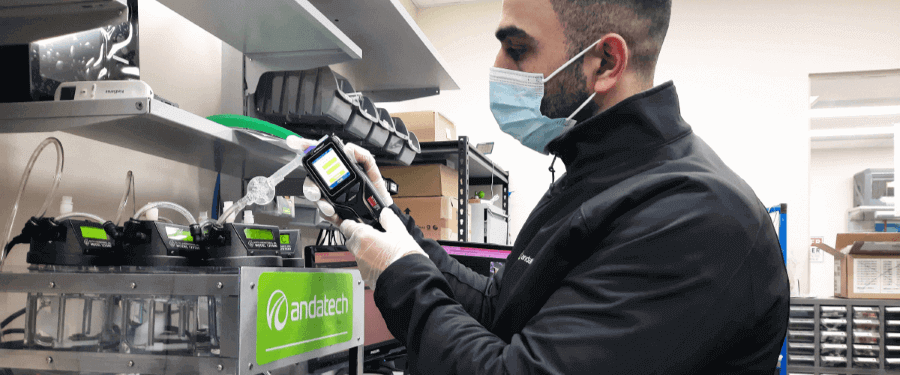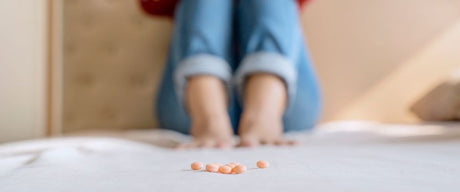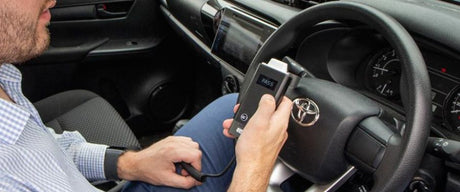We Australians love our alcohol. In fact, approximately 40% of the population drink alcohol at least once per week, including 5% of the population who drink daily, based on a study done by the Australian Institute of Health and Welfare. While the occasional glass of wine may seem relatively harmless, excessive alcohol consumption can have adverse effects on an individual’s work performance. As a regulative measure, breath alcohol testing is often conducted in the workplace, especially in the mining and transport industries.
As accurate breath alcohol test results are crucial for the proper execution of alcohol and drug testing policies, the onus is on companies to not only invest in quality breathalysers, but also in regular calibration services to make sure that all breath alcohol testing conducted is valid. The calibration process is fairly straightforward—breathalysers are sent to a calibration centre once every 6 to 12 months where trained technicians work their magic to return the breathalysers good as new. While the significance of routine breathalyser calibration is for the most part widely known, the technicalities behind the process remain unclear to many. What exactly goes on behind the scenes during the breathalyser calibration process?
I spoke to Dave, my colleague at Andatech’s calibration centre in Melbourne, to find out more.
An important behind-the-scenes task that is often overlooked
Dave Tagaviesfandoni has been working at Andatech as a technical support specialist for about 2 years now. If you are currently in the possession of an Andatech industrial breathalyser, most likely it was personally calibrated by Dave himself before you received it.
To learn more about the calibration process, I consulted Dave during his rounds at the calibration centre. “There is no better way to find out if a breathalyser measures breath alcohol level correctly than to carry out a calibration,” declares Dave as we approach the calibration bench. He explains how the calibration process effectively determines if a breathalyser has experienced sensor drift, an occurrence that results in less accurate readings as time passes. Dave’s extensive training and expertise have taught him that looks can be deceiving where breathalysers are concerned; he stresses how even breathalysers that look entirely functional on the outside could have experienced sensor drift.

It is common for measurement instruments like breathalysers to experience declined accuracy over time due to external factors, such as built-up impurities on the breathalyser sensor, improper storage, and usage of the breathalyser under unfavourable conditions. Due to the prevalence of external influences, breathalysers used in the workplace where breath alcohol testing is carried out frequently are prone to sensor drift.
Particularly susceptible to sensor drift are breathalysers with sensors that can measure up to 3 decimal points. Other reasons for sensor drift include exposure to a high concentration of alcohol, in the instance where the subject blows into the breathalyser immediately after alcohol intake, as well as exposure to high humidity and high temperatures.
Dave places an Andatech Prodigy S carry case on the bench and picks up the breathalyser that’s scheduled to be calibrated today. “Here comes the easiest part of the calibration,” he smiles.
In the breathalyser calibration process, a breath alcohol simulator that generates simulated exhaled air with known alcohol concentration is used. Dave inserts a new mouthpiece onto the breathalyser and runs a breath alcohol test using the simulator with 3 breath alcohol concentrations, namely 0.000g/210L, 0.050g/210L, and 0.100g/210L. After noting down the breath alcohol results, he turns on the calibration mode of the breathalyser through the settings panel and runs the test again. Finally, to verify that the calibration has been successful and that the breathalyser measures accurately, he repeats the first step and records the outcome.
Putting it simply, breathalyser calibration is a 3-step process. In each step, a new mouthpiece is used to prevent cross-contamination. If the breathalyser is unable to produce accurate breath alcohol results within the maximum permissible errors, the sensor is deemed faulty, following which repairs or a replacement will have to be made.
While relatively straightforward, the process is preceded by a series of preparatory measures. Dave explains the extra steps taken prior to conducting a calibration, “Firstly, the breath alcohol simulators need to warm up to a certain temperature so that the simulated exhaled air generated is similar to humans’ breath,” explains Dave. During this process, a solution of water and ethyl alcohol of known concentration is heated to an operating temperature to generate a breath test effluent sample having a known alcohol concentration. Following this, the breath alcohol concentration in the simulators is tested every 2 hours or every 50 calibrations using a reference breathalyser to make sure that the quality of the simulated exhaled air generated is still suitable for calibration. The reference breathalyser used in this step is calibrated at least once a month to ensure its accuracy which in turn confirms the breath alcohol concentration of the simulated exhaled air.
Before the newly calibrated breathalyser is shipped back to the customer, Dave inserts fresh batteries and places several new mouthpieces into the carry case. “Now this breathalyser is ready to get back into action on-site,” says Dave as he snaps the case shut.

An insight into a NATA accredited calibration centre
Without proper and regular calibration, even Australian Standard certified breathalysers can deviate from their original accuracy, potentially producing inaccurate breath alcohol test results. The key to ensuring that your breathalysers will live up to their standard for years to come is through calibration. In light of NATA’s recent accreditation of Andatech’s Melbourne calibration centre, I talked to Matt Golchin, the Head of Calibration Services at Andatech who led this initiative, to get a better picture of Andatech’s efforts in pairing its products with services of equally comparable quality.
“It’s not just about the method and equipment used for calibration,” Matt explains, “but also the competency of our calibration technicians, traceability of breath alcohol results, and quality control processes in accordance to the ISO/IEC 17025 standard which is recognised nationally and internationally.” He then describes how each step in the calibration process can be traced using CalTrace, a calibration management software that allows for internal audits to be easily conducted.
To date, there are only 11 NATA accredited calibration centres for breathalysers in Australia; Andatech is the latest addition to the list upon receiving the accreditation in March 2022.
Although it is not mandatory for calibration centres in Australia to be NATA accredited, NATA accredited organisations have the competitive advantage of knowing they have a proven, independently assessed benchmark for performance. NATA accreditation also provides companies with the confidence to accurately and efficiently deliver on results, which ultimately gives consumers the assurance they need to make safe, healthy and reliable choices. “We want to provide our clients with the assurance that their breathalysers are well taken care of in the best way possible,” asserts Matt.
Following calibration at Andatech’s Melbourne calibration centre, breathalysers are returned with a breathalyser calibration certificate with a NATA emblem at the bottom. Matt shows me the certificate in question which contains important information such as the date of calibration, calibration method, and test results; this serves as proof of calibration for each breathalyser based on its serial number.
The key to breathalysers that last
Just like how a motor vehicle requires annual servicing, breathalysers require regular upkeep in the form of calibration to make sure that they are able to perform as intended with a prolonged lifespan. Well maintained industrial breathalysers can last more than 5 years with no concern of breaking down. Ensure the smooth implementation of your company’s alcohol and drug testing policy with reliable breathalysers to create and maintain a safe working environment for your employees.





